First off, tell us about your history with photography. How did you get started, and what are the wells from which you draw your inspiration?
Beth Dow (BD): My dad was an industrial photographer and filmmaker, so I grew up around cameras and darkroom equipment, and learned pretty early on to see the world through the viewfinder’s rectangular frame. My preferred medium, however, was graphite, and I drew obsessively. I don’t draw very often now, but graphite’s soft gray mid-tones are still evident in my photographs.
I’ve always been interested in the peculiar ways we shape and experience the land, and this also goes back to my childhood. We lived on a dead-end road that led to a wide, wild field. This field held all the secrets of the suburban neighborhood’s mythology, and was punctuated dead-center by an old black (yes, it really was black) farm house just a little too far away to venture alone. We rode our bikes, spied on smoking teens and roosting herons, caught snakes, and filled buckets with wild strawberries. Here, I learned that the landscape is a messy, dangerous, wonderful place, and that sometimes the most magical things happen on a small, subtle level.
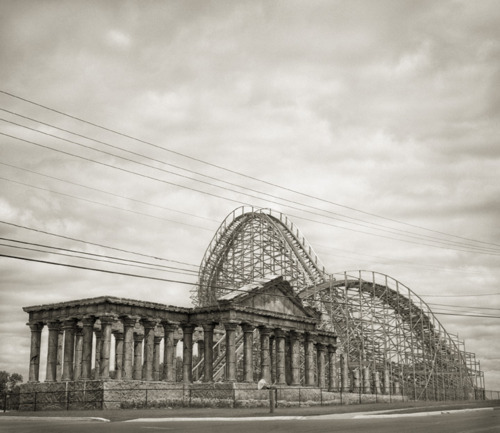
© Beth Dow from the series 'Ruins', Coaster
The images you make are done through a hybrid of contemporary and vintage photographic processes, could you elaborate on the methods you use to create your work?
BD: My work includes technology from the three centuries touched by photography. I shoot 20th century medium-format roll film with a hand-held camera, edit and convert the images to large-format inkjet negatives with 21st century digital technology, and then Keith Taylor, my husband and printer, makes hand-coated platinum prints with 19th century processes. I adore film. Film. FILM. Say it. Use it. Love it.
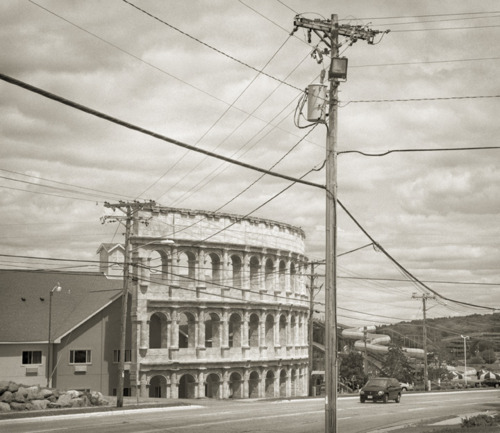
© Beth Dow from the series 'Ruins', Colosseum
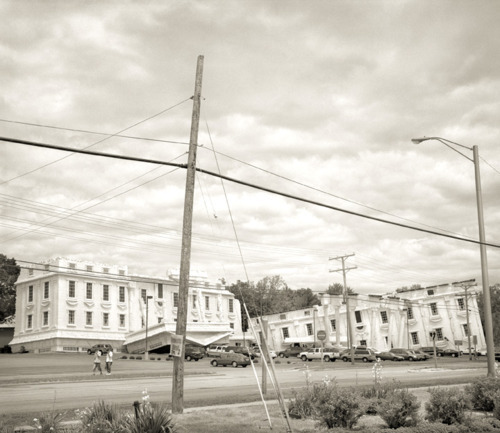
© Beth Dow from the series 'Ruins', White House

© Beth Dow from the series 'Ruins', Facade
I’m interested in your 'Ruins' series because the nature of the subject matter goes hand in hand with your process. You photograph scenes of faux antiquity, contemporary contraptions designed to immerse viewers in the illusion of the true history that these places try to invoke. Is the irony intended, in that your subject matter mirrors the conceptual stance of you process? Is so, what’s the bottom line?
BD: The fake ruins are perfect metaphors for me. I briefly considered going the whole route of view camera, wet plate collodion, albumen, etc., but nixed that idea on the next blink. 'Ruins' is modeled on the work of Francis Frith and other Victorian expedition photographers. They used the materials and processes they were most comfortable with, so I took the same strategy and shot it with my Fuji 6x7. I kept the tonality rather similar, and cars and power lines are my stand-ins for their two-men-and-camel. I also like how the rich platinum process emphasizes a tension between the high-brow and low-brow. These photographs make me laugh, but it’s a laugh of recognition rather than derision. While these appropriations and approximations of antiquity may be peculiar, they also signal a kind of unspoken agreement that these forms mean something to us. They are follies of pre-crumbled ruins that seem to suggest our mortality, but I prefer to think of them in a different way. I recently photographed genuine antiquities in Greece, and was struck by the tenacity of those structures. Sure, they are cracking, tipping over, wearing away, but they are still there! They persist in the landscape, and their forms persist in our architecture today. Ruins can be markers of endurance.
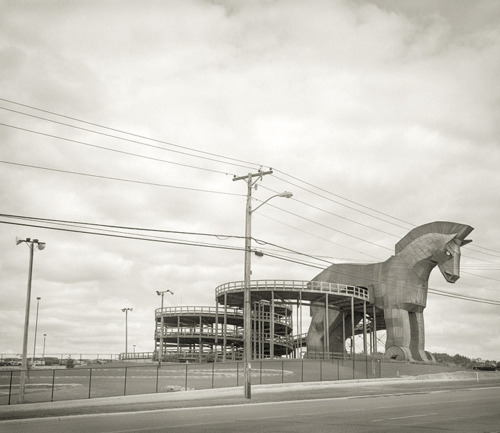
© Beth Dow from the series 'Ruins', Trojan Horse

© Beth Dow from the series 'Ruins', Road and Tower
Another series of yours, 'In the Garden' gives us images of, from your statement: “formal English and Italian gardens.” These shots, for me, conjure up the work done by Atget near the Palace of Versailles. The tones in these photos are full and dynamic, and give a certain ethereal quality to these places. The garden itself is an oft used motif throughout the history of art, as a symbol of both lavishness and prosperity; your pictures however disregard the warmth and color of the gardens for the sake of something more mysterious. Could you elaborate on this a bit, and perhaps provide some insight into your motivations going into this project?
BD: I lived in London for years, so these places are familiar. An intelligently designed garden is a magical place, and color, for me, has absolutely nothing to do with it. One of our earliest creative urges as humans was to arrange our environment. This urge evolved into the long, rich history of garden-making that most American probably don’t know exists. Reading about garden history and design touches on all the great themes of life, certainly things like power, sex, and religion. Flowers don’t interest me in any way, and I can’t enjoy gardens that are only pretty, because they completely miss the point and betray an ignorance of landscape history.

© Beth Dow from the series 'In the Garden', Benches, Blenheim Palace
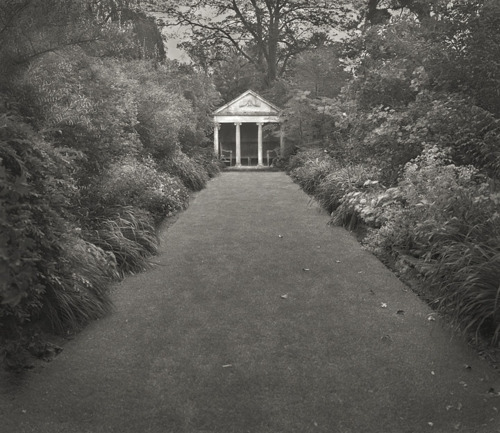
© Beth Dow from the series 'In the Garden', Temple, The Courts
The Atget thing is a hard one to shake because he is often mentioned. Maybe because most garden photographs are in color? Color garden photographs are too specific for me, drawing my attention to horticultural and botanical details when I’d rather think of near/far, liquid/solid/vapor, hard/soft/rough, up/down. I can illustrate it this way: the idea of a rose garden sounds rather wonderful, right? Have you ever been to one? Ugh. Chest-high plant after chest-high plant, plenty of color yet about as interesting as a seed catalog. I’m more concerned with why and how we continue to interfere with our environment, especially when there is no immediately discernible practical reason. A well-considered garden is a perfect example of this.

© Beth Dow from the series 'In the Garden', Hillside, Waddesdon Manor
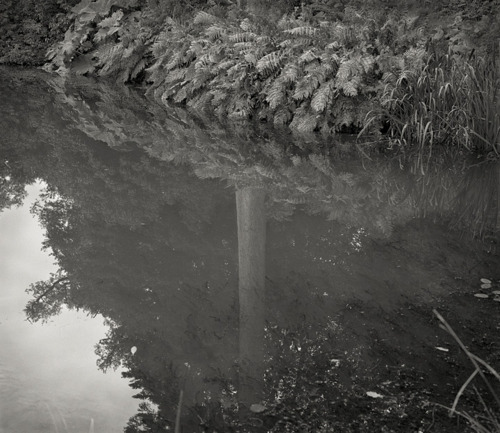
© Beth Dow from the series 'In the Garden', Stable Pond, Powis Castle, Wales
What’s coming up for you in 2012, photographically or otherwise?
BD: I was fortunate to be awarded a grant from the Minnesota State Arts Board and a fantastic fellowship from the McKnight Foundation this year and I’m using those big boosts to look more deeply at ruins. I’m fabricating a classical history of the Twin Cities, merging images of Greek and Roman ruins with their local architectural echoes. This will include artist books, photographs, and hopefully some experimental forms. I’m also digging deeper into books, playing with letterpress and different binding systems. I’m having fun!

© Beth Dow from the series 'Lossless'
---
LINKS
Beth Dow
United States
share this page